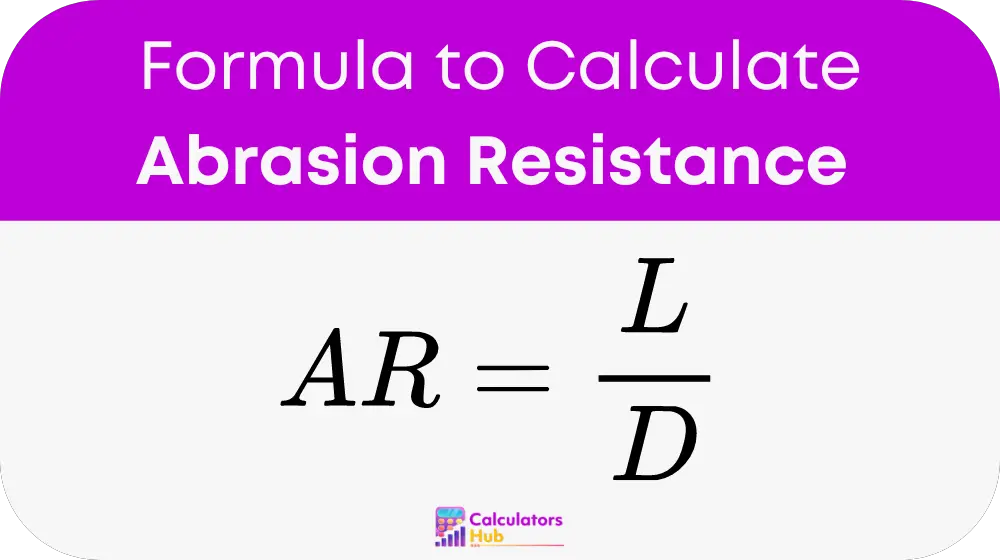The Abrasion Resistance Calculator helps determine the durability of materials by calculating their resistance to wear and tear. This tool is essential for industries where material longevity is critical, such as construction, manufacturing, and textiles. By understanding the abrasion resistance of a material, engineers and designers can select the best materials for their projects, ensuring longevity and reliability.
Formula of Abrasion Resistance Calculator
The abrasion resistance of a material can be calculated using the following formula:

Where:
AR is the abrasion resistance
L is the length of the material worn away (measured in millimeters or inches)
D is the density of the material (measure in grams per cubic centimeter or pounds per cubic inch)
This formula helps determine the durability of materials in various applications.
Common Terms and Conversion Table
Here is a table for general terms and conversions that can be useful for quick reference:
| Term | Conversion |
|---|---|
| Millimeters (mm) | 1 mm = 0.03937 inches |
| Inches (in) | 1 in = 25.4 millimeters |
| Grams (g) | 1 g = 0.00220462 pounds |
| Pounds (lb) | 1 lb = 453.592 grams |
| Cubic centimeter (cm³) | 1 cm³ = 0.0610237 cubic inches |
| Cubic inch (in³) | 1 in³ = 16.3871 cubic centimeters |
This table helps users convert measurements without calculating each time.
Example of Abrasion Resistance Calculator
Let's consider an example to understand the calculation better.
Suppose we have a material with the following properties:
- Length of the material worn away (L) = 5 millimeters
- Density of the material (D) = 2.5 grams per cubic centimeter
Using the formula:
AR = L / D
AR = 5 / 2.5 = 2
The abrasion resistance of the material is 2.
Most Common FAQs
The accuracy of the abrasion resistance calculation depends on the precision of the measurements for length and density. It is important to use accurate tools and methods to ensure reliable results.
Yes, the Abrasion Resistance Calculator can be use for various materials, but it is essential to ensure that the measurements are appropriate for the specific material being test.
The frequency of testing abrasion resistance depends on the application and usage of the material. Regular testing is recommend for materials subject to high wear and tear to ensure their durability and performance.